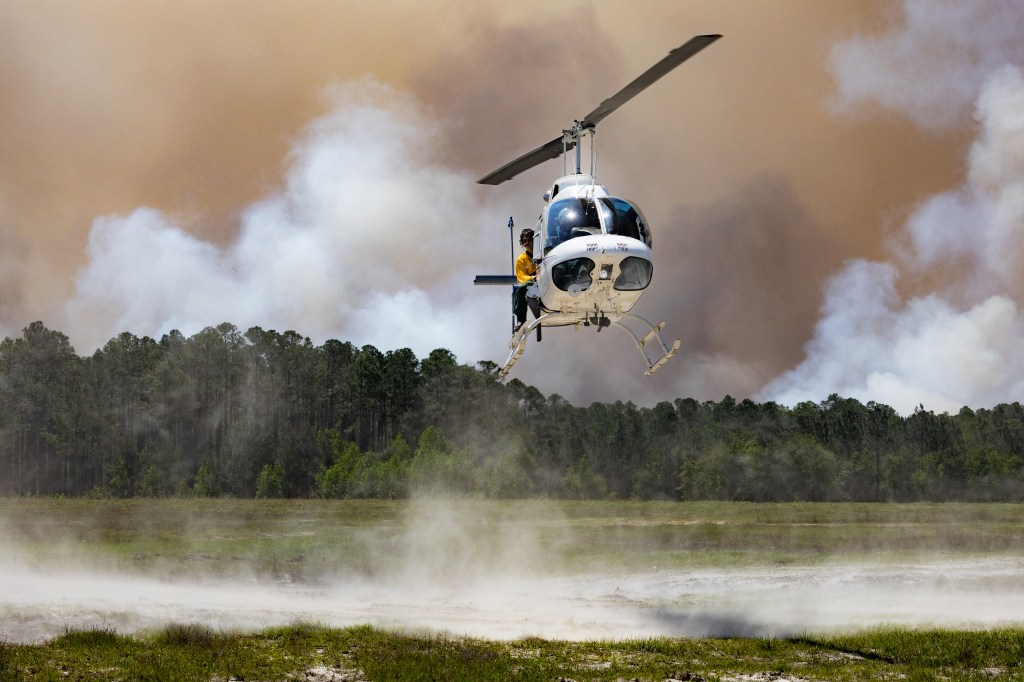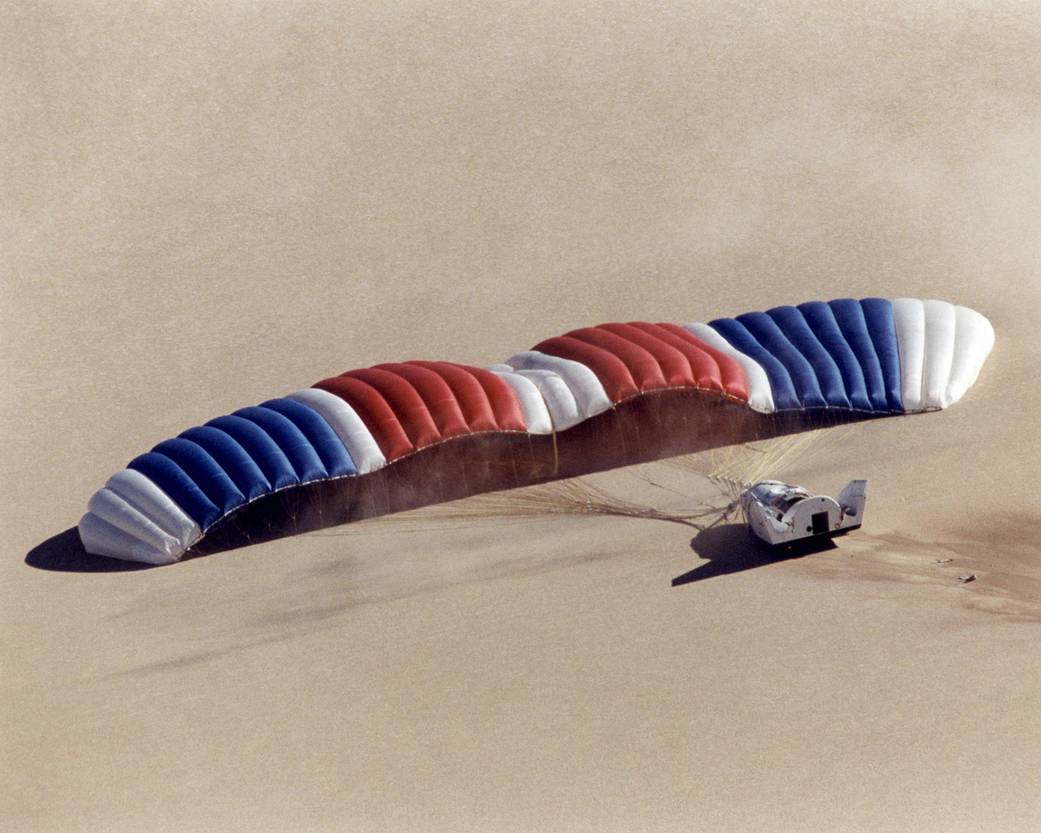EC00-0317-52
Looking like a giant air mattress, the world’s largest parafoil slowly deflated seconds after it carried the latest version of the X-38, V-131R, to a landing on Rogers Dry Lake adjacent to NASA’s Dryden Flight Research Center at Edwards, CA, at the end of its first free flight, November 2, 2000. The X-38 prototypes were intended to perfect technology for a planned Crew Return Vehicle (CRV) “lifeboat” to carry a crew to safety in case of an emergency on the International Space Station. Free-flight tests of X-38 V-131R evaluated upgraded avionics and control systems and the aerodynamics of the modified upper body, which was more representative of the final design of the CRV than the two earlier X-38 test craft, including a simulated hatch atop the body. The huge 7,500 square-foot parafoil was intended to enable the CRV to land in the length of a football field after returning from space. The first three X-38’s were air-launched from NASA’s venerable NB-52B mother ship, while the last version, V-201, was to have been carried into space by a Space Shuttle and make a fully autonomous re-entry and landing.November 2, 2000NASA Photo / Carla Thomas› X-38 Project Description
1 min read






















